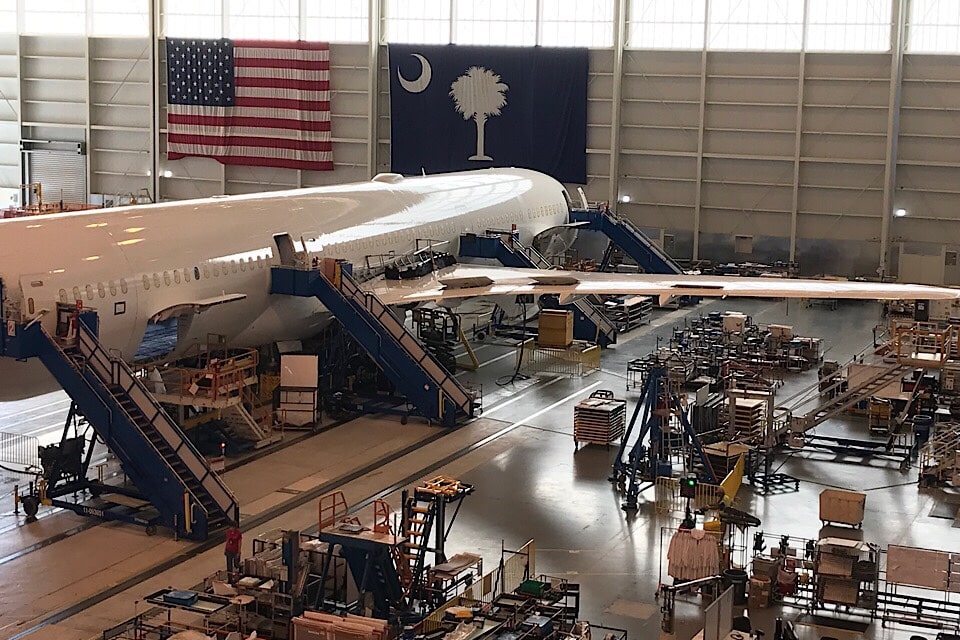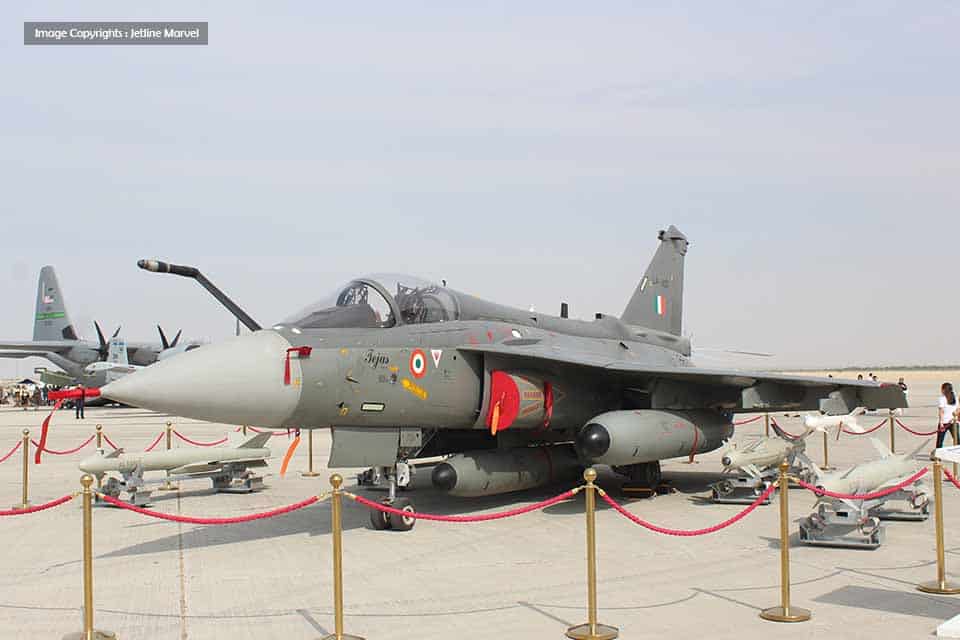Aviation
New York Times story paints an inaccurate picture of Boeing South Carolina

This message from Brad Zaback, Vice President and general manager of the 787 Program, was sent to all Boeing South Carolina teammates Saturday, April 20.
Team,
The 787 program has a lot to be proud of these days. Our transition to Rate 14 continues to be the most seamless rate transition in the program’s history, and our Boeing South Carolina 787 manufacturing operations are the healthiest they’ve ever been. More importantly, our quality metrics show that we are performing at all-time high levels as well. That is a testament to each of you, demonstrating your pride and your ongoing commitment to excellence with respect to both safety and quality.
A story that posted in today’s New York Times, however, paints a skewed and inaccurate picture of the program and of our team here at Boeing South Carolina. This article features distorted information, rehashing old stories and rumors that have long ago been put to rest.
I want all BSC teammates to know that we invited the New York Times to visit Boeing South Carolina once they contacted us, so that they could see first-hand the great work that is done here. They declined this invitation.
The allegations of poor quality are especially offensive to me because I know the pride in workmanship that each of you pours into your work every day. I see the highest quality airplanes – airplanes that meet rigorous quality inspections and FAA standards – deliver on time on a regular basis from Boeing South Carolina, where they perform exceptionally well in service for our valued airplane customers around the world. Our customers feel the same way, and shared their own thoughts with the New York Times:
American Airlines said it conducted rigorous inspections of new planes before putting them into service. “We have confidence in the 787s we have in our fleet,” said Ross Feinstein, a spokesman for the airline.
In a statement, Qatar Airways said it “continues to be a long-term supporter of Boeing and has full confidence in all its aircraft and manufacturing facilities.” Note that only a portion of their quote was included in the story, and we wanted to ensure you had their full perspective: “Qatar Airways continues to be a long-term supporter of Boeing and has full confidence in all its aircraft and manufacturing facilities as a strong commitment to safety and quality is of the utmost importance to both our companies. We have over 100 Boeing aircraft in our fleet, manufactured in both Everett and Charleston, with many more to join in the coming years as part of our significant, long-term investment in the US economy.”
In fact, we also heard from Supernal Airlines and Norwegian in response to the story, and here’s what they told us:
Suparna Airlines: “The entire process of the aircraft delivery was very smooth. We want to thank the Boeing team in South Carolina who worked diligently with the Boeing standard and discipline to make the delivery a pleasant experience for us. The airplane has carried out more than 200 scheduled flights with total flight hours up to 500 at an operational reliability of 99.99%. We are happy with the performance of our first Dreamliner.”
Norwegian: “We are very satisfied with the quality and reliability of all our 33 Dreamliner, regardless of where they have been assembled.”
PAINT IS FLAKING ON AIR NEW ZEALAND’S DREAMLINERS
The inaccurate picture the New York Times paints is also offensive to me because they are counter to our company’s core values. Quality is the bedrock of who we are. That’s why we relentlessly focus on quality improvements and FOD elimination at all Boeing locations. No matter how good we are today, we always believe we can be even better tomorrow. That drive to be the best will never change at Boeing as we continue to strive to be a Global Industrial Champion and the leader in quality.
It’s unfortunate and disappointing that the New York Times chose to publish this misleading story. This story, however, does not define us. Our company and our customers recognize the talent, skill and dedication of this excellent Boeing South Carolina team that works together to assemble and deliver incredible airplanes. I want to leave you with a word from Kevin McAllister, Boeing Commercial Airplanes president and CEO, which was not included in full from the New York Times:

Aviation
Tejas and C-390 Millennium: India and Brazil’s Defense Trade Vision

India and Brazil are exploring a mutually beneficial deal to enhance their defense product exports. There are indications that this potential agreement could include the exchange of fighter jets, essentially functioning as a barter system. For example, India has a long-standing offset policy requiring foreign defense companies to reinvest a portion of their contract value back into India through technology transfer or other reciprocal benefits.
Many countries engage in such exchanges to support each other’s defense industries, thereby strengthening national policies and economies. A notable example is the barter deal between South Korea and Indonesia, where South Korea sold its T-50 jets to Indonesia in return for defense-related goods and trade advantages.
India-Brazil defence mutual benefits
If the India-Brazil deal comes to fruition, it could provide mutual benefits, as both nations are in need of advanced platforms. Brazil is well-known for its Embraer aircraft, which ranks as one of the top three manufacturers of private and commercial jets. However, Brazil lacks expertise in fighter jet production, and this deal could provide the exposure needed to enter the fighter jet market.
In 2014, Brazil made a significant purchase of 36 Gripen fighters, with deliveries expected by 2027. Brazil is also producing Gripen fighter jets at its Embraer plant, with SAAB and Embraer collaborating to enhance the performance of the Gripen aircraft further.
India Faces Shortage of Military Aircraft Materials
Currently, India faces a shortage of medium military transport aircraft and is seeking to acquire more. The C-130J and C-17 Globemaster, along with the Russian IL-76, are currently in service. However, the production of the C-17 has been halted, making it unavailable in the market, while the IL-76 is experiencing maintenance challenges due to a shortage of spare parts.
Air India Might Operate Tata-Made New Airbus C295 Aircraft
India is currently seeking a reliable partner for military transport aircraft, and the Embraer C-390 Millennium stands out as an ideal fit. If a deal between Brazil and India materializes, it could yield significant benefits for both nations.
Embraer C390 payload capacity
The Brazilian Air Force is the largest in the Southern Hemisphere and the second largest in the Americas. Embraer proudly presents the C-390 Millennium as the future of military transport aircraft, featuring a payload capacity of 26,000 kg. This makes it a compelling choice, especially since it outperforms the C-130J Super Hercules, which has a payload capacity of 19,000 kg. Given India’s interest in enhancing its military capabilities, it’s clear why experts believe that discussions around this aircraft could lead to a significant agreement.
This international airline is offering free flight tickets to Indian travelers
Brazil operates the Gripen E fighter jet, which is expected to expand its fleet in the near future. However, the Tejas fighter jet has certain advantages over the Gripen. For instance, the Tejas features a quadruple digital fly-by-wire system that offers greater redundancy and safety compared to the single FBW system in the Gripen. Additionally, its use of composite materials reduces its radar cross-section, and its wide duct air intake enhances performance. Notably, the Tejas can take off in as little as 460 meters, significantly shorter than the Gripen’s 800-meter requirement.
Tejas and Gripen E Engine
Both jets are equipped with advanced avionics and electronic warfare systems, but the Gripen does hold some advantages with its more powerful GE F414 engine. The Gripen has a better payload capacity and maximum takeoff weight, and the optimized F414 engine provides superior thrust, enhancing agility and aerial engagement capabilities. However, the F404 engine of the Tejas is cheaper to maintain and operate compared to the F414.
With a maximum capacity of 26 tonnes, the C-390 surpasses the C-130’s 19-tonne capacity. Additionally, the C-390 is equipped with both probe and drogue systems, allowing it to refuel fighter jets and even serve as a tanker—capabilities that the C-130J does not offer. If India and Brazil decide to collaborate on the C-390’s production, it could be a game-changer for both nations.
India could potentially modify the C-390 aircraft for combat roles, such as launching long-range subsonic cruise missiles. This adaptation is feasible, as evidenced by the U.S. using its MC-130 to launch AGM-158 missiles.
India’s collbration with TATA & Airbus C295
Currently, India, in collaboration with Airbus, is producing around 56 aircraft for defense purposes. This milestone strengthens India’s defense capabilities, as spare parts will be more accessible due to local production and support. The C295 aircraft plays a crucial role in boosting regional connectivity and transporting troops and essential military supplies.
Furthermore, the C-390 could function as a drone mothership for deploying India’s swift and stealthy drones, providing a cost-effective solution that maximizes operational capabilities. However, challenges related to self-survivability, precision strikes, and operations in contested environments need to be addressed. If these challenges can be resolved, this concept could significantly enhance India’s long-range strike capabilities.
Similarly, manufacturing the Tejas MK1 in collaboration with Brazil would bring substantial benefits, especially for Brazil. Their mutual membership in BRICS could foster deep cooperation, defense technology sharing, and industrial development. By partnering on the Tejas program, Brazil’s aerospace industry could enter the fighter aircraft segment, leading to advancements in knowledge transfer and the establishment of local supply chains.
Reducing reliance on India for fighter maintenance and support, the C-390 Millennium would significantly enhance India’s logistical and operational capacity. Meanwhile, the Tejas MK1A offers Brazil an affordable yet effective solution to bolster its air combat capabilities, further deepening the strategic ties between the two nations.
-

 Aviation2 months ago
Aviation2 months agoMicrosoft Flight Simulator Raises $3 Million to Bring Back the An-225 Mriya
-

 Airlines2 months ago
Airlines2 months agoQatar Citizens Can Travel to the United States Without a Visa
-

 Aviation2 months ago
Aviation2 months agoQatar Airways bans these new Electronic Devices on plane
-

 Defence2 months ago
Defence2 months agoWhich Country Has the Largest Fleet of Fighter Aircraft?
-

 Airlines6 days ago
Airlines6 days agoDAMAC Air: Dubai’s New Luxury Airline Offers Free Flights for Registration
-

 Airport2 months ago
Airport2 months agoWestern Sydney Airport Welcomes Its First Plane After 6 Years of construction
-

 Airlines5 days ago
Airlines5 days agoAir India to Launch aircraft maintenance training institute in Bengaluru
-

 Aviation2 months ago
Aviation2 months agoDid you know ? Once Boeing 747 carried 1088 passenger in 1991








